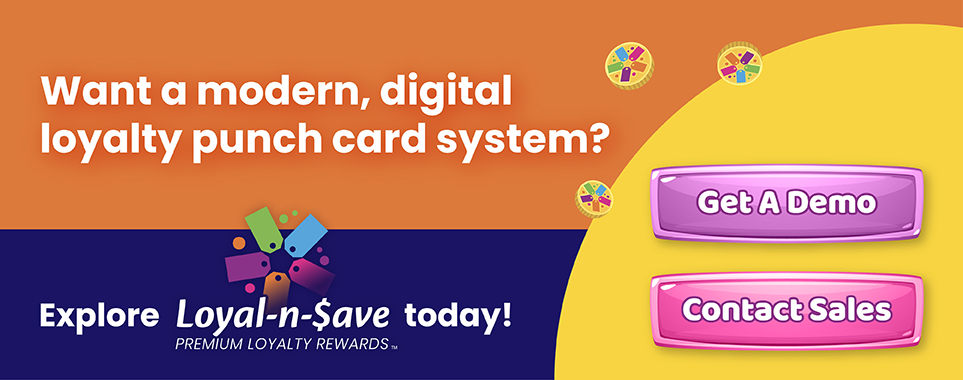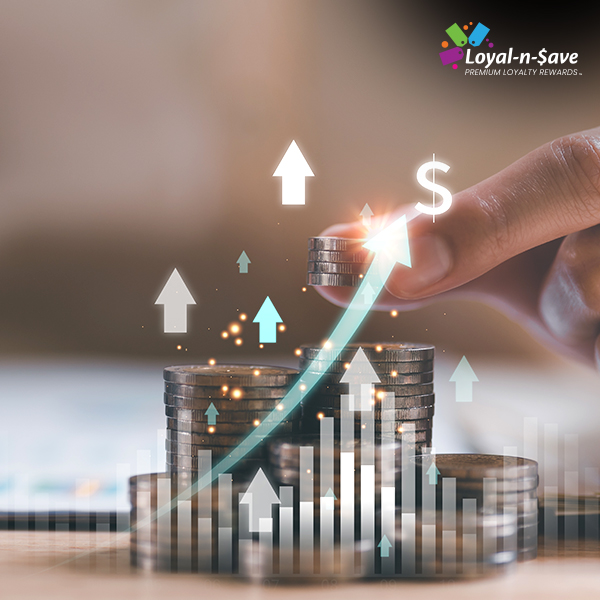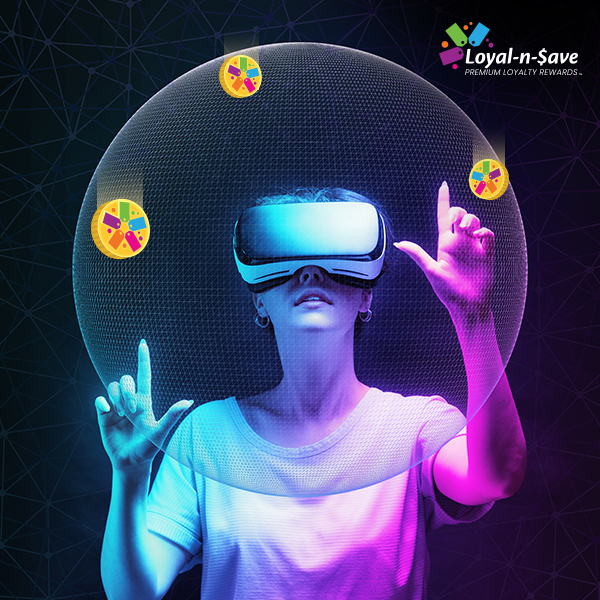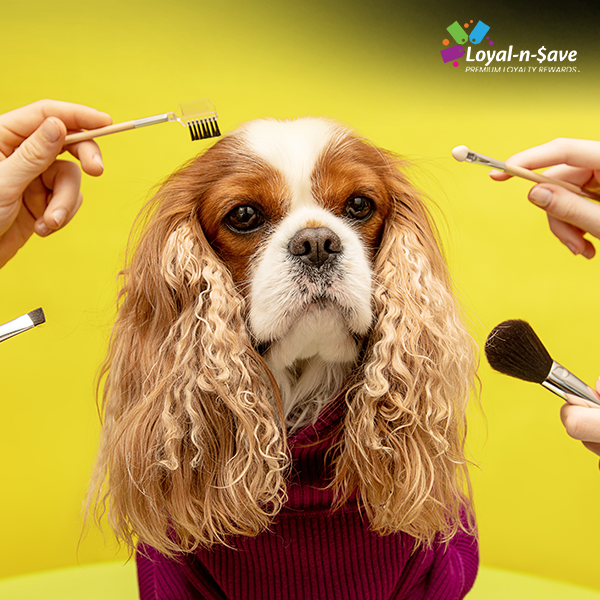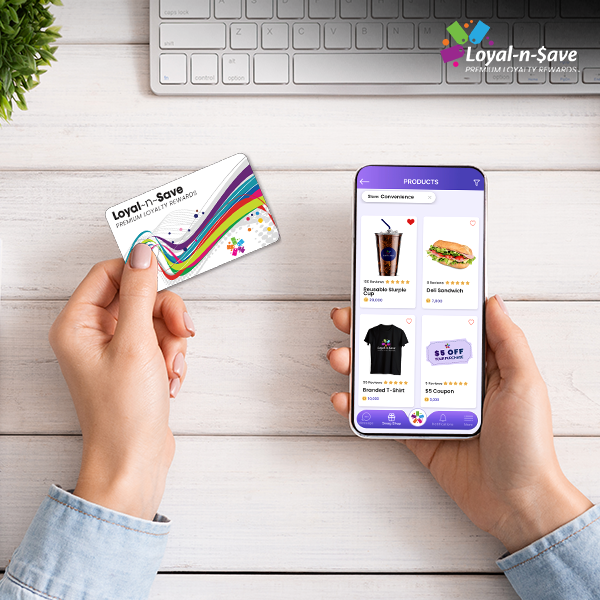Loyalty Punch Cards 101: The Small Business Guide to Boosting Repeat Sales

Loyalty punch cards are a proven way to encourage repeat customers and increase sales for small businesses. Whether physical or digital, these cards reward customers for their purchases, fostering brand loyalty.
This blog post explores different types of punch card loyalty programs, their benefits, and best practices to implement them effectively.
We urge retail managers, small and medium-sized business (SMB) owners, and stakeholders to effectively implement loyalty strategies through punch cards to see growth in their business.
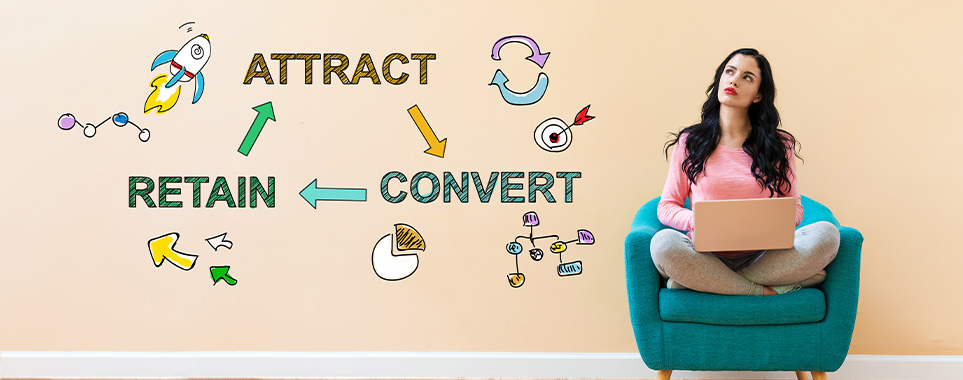
Every business wants customers to return—but how?
Loyalty punch cards are a simple yet powerful tool to keep shoppers engaged. By rewarding repeat purchases, these cards turn one-time buyers into loyal fans.
Small businesses need smart strategies to keep customers coming back—and loyalty punch cards are one of the simplest yet most effective tools available.
From a liquor store to a salon to a restaurant, a well-designed punch card loyalty program can:
- Increase repeat visits by up to 30%
- Boost average order value by encouraging more purchases
- Turn casual buyers into loyal brand advocates
What Are Customer Loyalty Punch Cards?
A loyalty punch card is a rewards system where customers earn a “punch” (or stamp) for each purchase. After collecting a set number (e.g., 10 punches), they redeem a free product, discount, or exclusive perk.
Why It Works:
- Psychological incentive: Customers feel progress with each punch.
- Low-cost for businesses: Rewards are only given after repeat purchases.
- Versatile: Works for coffee shops, salons, retail stores, gyms, and more.
Paper vs. Digital Punch Cards
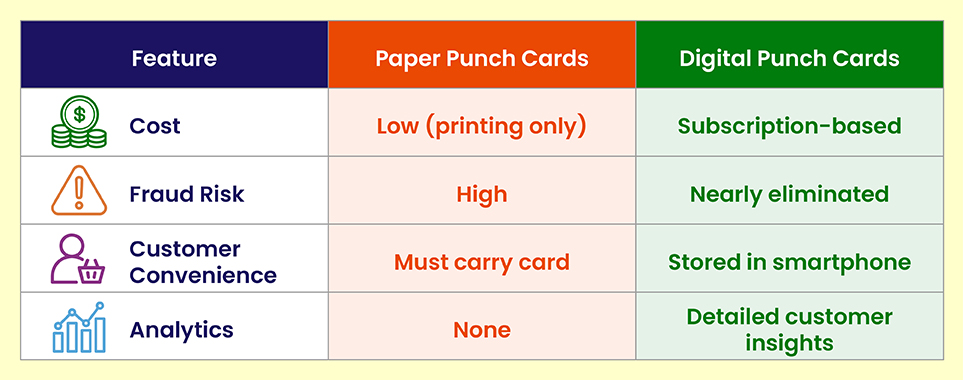
Key Takeaway:
- Paper punch cards are great for budget-conscious, local businesses.
- Digital punch cards (like Loyal-n-Save) offer automation, fraud prevention, and customer insights.
Loyalty Punch Card Types & How to Choose the Best One
Not all punch cards are created equal—your business needs a system that aligns with your goals and customers. From custom-designed cards to digital apps, each type offers unique advantages. Let’s explore the options so you can pick the perfect fit.
Custom Punch Cards
- Branded with your logo, colors, and rewards
- Best for: Businesses wanting a personalized touch to strengthen brand identity.
Business Punch Cards
- Pre-designed templates (e.g., generic “Buy 3, Get 1 Free” cards).
- Best for: Quick, low-effort implementation.
Personalized Punch Cards
- Tailored rewards based on customer preferences
- Best for: Liquor stores, tobacco & vape shops, and other legacy-based businesses.
Digital Punch Cards
- Managed via apps (e.g., Loyal-n-Save).
- Best for: Tech-savvy customers & retailers wanting automated tracking.
Subscription-Based Punch Cards
- Paid VIP memberships (e.g., “$10/month for double punches”).
- Best for: Gyms, spas, convenience stores and businesses with frequent repeat customers.
How to Choose the Right One?
- Budget: Paper cards are cheaper; digital requires a small investment.
- Customer Base: Older demographics may prefer physical cards.
- Business Type: Restaurants vs. retail stores have different needs.
Why Should I Get Loyalty Cards for My Small Business?
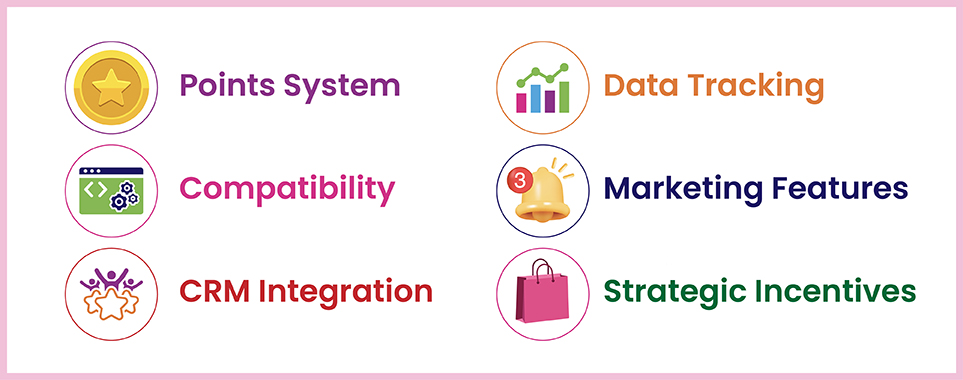
Every small business owner asks: “Is a loyalty punch card program worth the effort?” The resounding answer is yes!
In a world where customer retention is crucial as 65% of a company’s revenue comes from existing customers (statistic from cropink.com), punch cards are a simple way to stand out.
They’re not just about freebies—they boost sales, build habits, and turn customers into fans.
Here’s exactly why investing in customer loyalty cards for small businesses delivers measurable returns:
1. Enabling a Points System That Drives Repeat Sales
A well-structured punch card loyalty program creates a powerful psychological incentive. When customers see visual progress toward a reward (like 2/10 punches completed), they’re more likely to complete and attain the results.
2. Seamless Compatibility with Loyalty Apps
Modern digital punch card for small business solutions integrates with:
- Mobile wallet apps (Apple Wallet, Google Pay)
- Popular point-of-sale systems (Loyal-n-Save comes integrated with FTx POS)
- Payment processors like Stripe
This means:
- Customers never lose their punch cards (solving the #1 paper card problem)
- You can send automated reminders like “Just 2 more visits for your free latte!”
- Redemption happens automatically at checkout
3. CRM Integration for Smarter Customer Relationships
When your business loyalty punch cards connect to customer relationship management (CRM) software:
- Customer purchase histories become marketing gold
- You can segment buyers by frequency/spending habits
- Trigger personalized offers (e.g., “We noticed you love bourbon– get 10% off!”)
Learn how your POS system and CRM can work together Read Article
4. Advanced Customer Data Tracking
Unlike guesswork marketing, digital loyalty punch cards provide:
- Heat mapping of most popular visit days/times
- Product affinity reports showing what reward-seekers buy most
- Redemption rate analytics to optimize your rewards
5. Built-In Marketing Features That Convert
Today’s loyalty program punch card solutions include:
- Automated email/SMS campaigns when punches are earned
- Social media integration for easy sharing
- Referral tracking to identify your best brand ambassadors
6. Strategic Incentives That Boost Profit Margins
The most successful custom loyalty punch cards use:
- Tiered rewards (5 punches=free drink, 10 punches=free sub)
- Upsell incentives (“Add $3 to your order for double punches today!”)
- Seasonal boosts (“Holiday Special: All punches count double in December”)
Benefits of Custom Loyalty Cards for Small Businesses
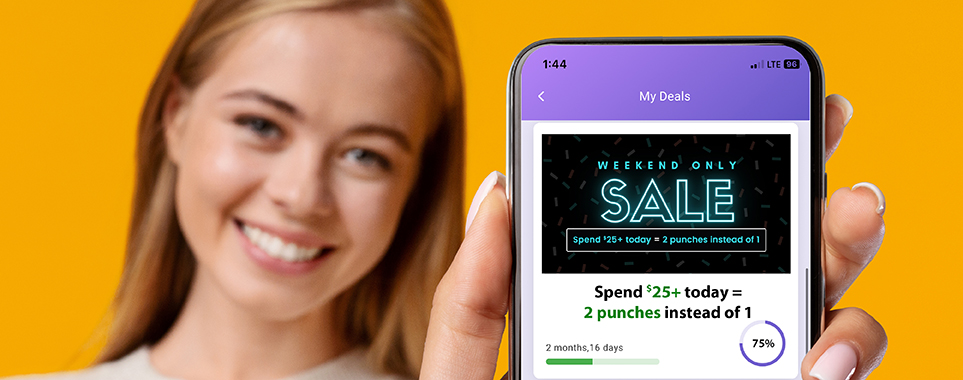
While generic punch cards can deliver basic results, custom loyalty punch cards transform your program from a simple rewards system into a powerful business growth engine. With branded designs and tailored rewards, they increase spending, improve retention, and even streamline operations.
Let’s discover how small tweaks lead to big returns.
1. Increased Average Transaction Value (ATV)
Custom programs allow you to strategically structure rewards that boost per-customer spending:
- Upsell Incentives: “Spend $25+ today = 2 punches instead of 1”
- Combo Rewards: “Buy any 3 lunch items = bonus punch” increases add-on sales
- Tiered Thresholds: Higher spending levels unlock premium rewards
2. Precision Inventory Management
Tailored punch cards provide actionable purchasing data:
- Reward Redemption Tracking: Identifies which free items customers choose most
- Demand Forecasting: Punch completion rates predict future inventory needs
- Waste Reduction: Low-redemption rewards can be replaced
3. Reduced Price Sensitivity
Custom programs reframe pricing perceptions:
- Reward Psychology: Customers focus on earning rather than prices
- Exclusive Member Pricing: “Punch holders get 10% off all wines”
- Value Stacking: Combine with birthday/holiday bonuses
4. Seasonal Sales Amplification
Temporary customizations create urgency:
- Holiday Doubler: “All December visits = 2x punches”
- Event-Based: “Game Day Special: Complete 5 punches = free appetizer”
- Limited Edition: Collectible seasonal card designs
5. Supercharged Review Generation
Strategic customizations turn rewards into review magnets:
- Review-Based Punch: “Get bonus punch for Google review”
- Social Sharing: Custom cards with Instagram-worthy designs
- Tiered Feedback: Different rewards for reviews vs. referrals
Why Can’t Generic Cards Compete?
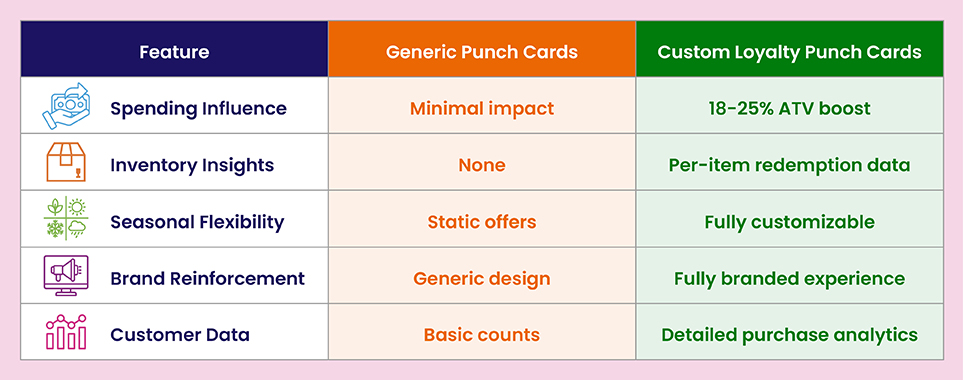
Best Practices for Implementing a Punch Card Program
A great punch card program fails without the right execution. Design, rewards, and promotion make the difference between forgettable and irresistible. Launching a successful loyalty punch card program requires strategic planning and execution.
Follow these actionable steps to create a program that drives repeat business and customer engagement:
1. Choose the Right Format for Your Business
Decision Factors:
Customer Demographics:
Older audiences may prefer physical cards, while millennials/Gen Z favor digital punch card loyalty programs
Business Type:
- Restaurants: Restaurant loyalty punch cards with meal-based rewards
- Retail: Tiered spending thresholds
- Services: Visit-based punch systems
Budget:
Physical cards cost $0.10-$0.50 each vs. digital platform subscriptions
2. Design High-Converting Loyalty Cards
Essential Design Elements:
- Brand Consistency: Use your logo, colors, and brand voice
- Clear Reward Structure: “Buy 9, Get 10th Free” beats vague wording
- Progress Tracking: Visual punch/stamp areas with numbering
- Contact Info: Website/phone for lost card recovery
Digital Card Must-Haves:
- Mobile wallet compatibility
- Push notification capabilities
- Automatic balance tracking
3. Structure Your Rewards for Maximum Impact
Reward Strategy Framework:
1. Threshold Setting:
a. 8-10 visits for frequent purchase businesses (coffee shops)
b. 5-6 for higher-ticket items (salons, boutiques)
2. Reward Types:
a. Free product/service (most effective)
b. Percentage discounts (20% off next purchase)
c. Exclusive access (VIP early sales)
3. Psychological Boosters:
a. “Head start” (give 2/10 punches at signup)
b. Double punch days
c. Limited-time bonus offers
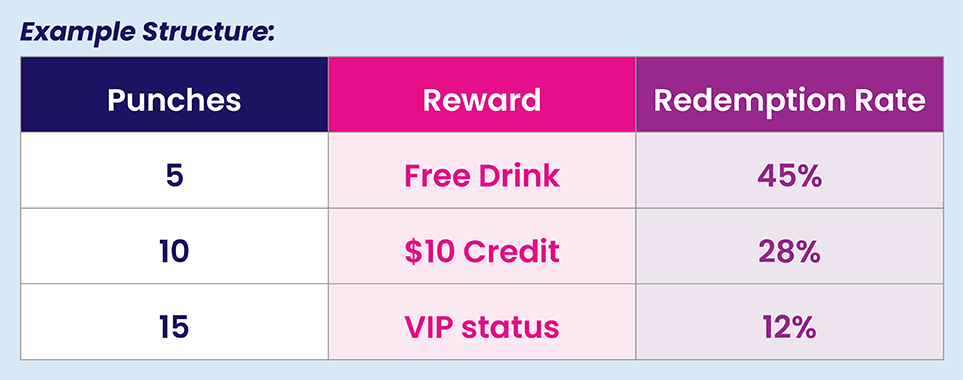
4. POS Integration for Seamless Operations
Here is a quick integration checklist to ensure that your loyalty program works effectively:
1. Ensure compatibility with your existing POS system
2. Train staff on:
- How to issue punches
- Reward redemption process
- Handling exceptions
3. Set up automatic punch tracking for:
- Dollar amounts spent
- Specific items purchased
- Visit frequency
5. Promote Your Program for Maximum Enrollment
Launch Marketing Plan:
1. Pre-Launch (1-2 weeks before):
a. Teaser social posts (“Big news coming for our best customers”)
b. Email collects signups for “exclusive first access”
2. Launch Week:
a. In-store signage at checkout
b. Staff scripts: “Would you like to join our free rewards program?”
c. Digital ads targeting past customers
3. Ongoing Promotion:
a. Transactional messages (“You’re 2 punches away from a free reward!”)
b. Seasonal refreshments (“Summer Double Punch Week!”)
c. Referral bonuses
Promotion Channels
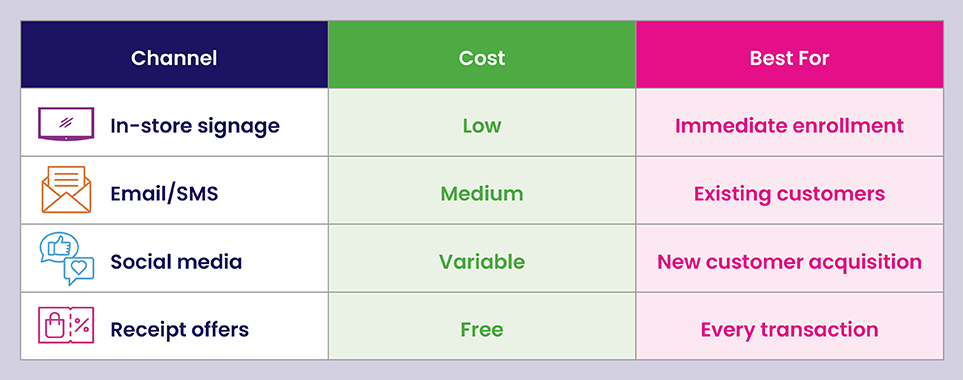
Wrap Up
Loyalty punch cards are a proven, low-cost way to increase repeat sales, boost customer retention, and grow your business. Whether you choose custom paper cards or a digital punch card loyalty program, the key is consistency and engagement.
You’re now armed with everything needed to launch a high-converting punch card loyalty program that doesn’t just reward customers—but fundamentally transforms your business’s revenue potential.
Posted on Apr 17, 2025



